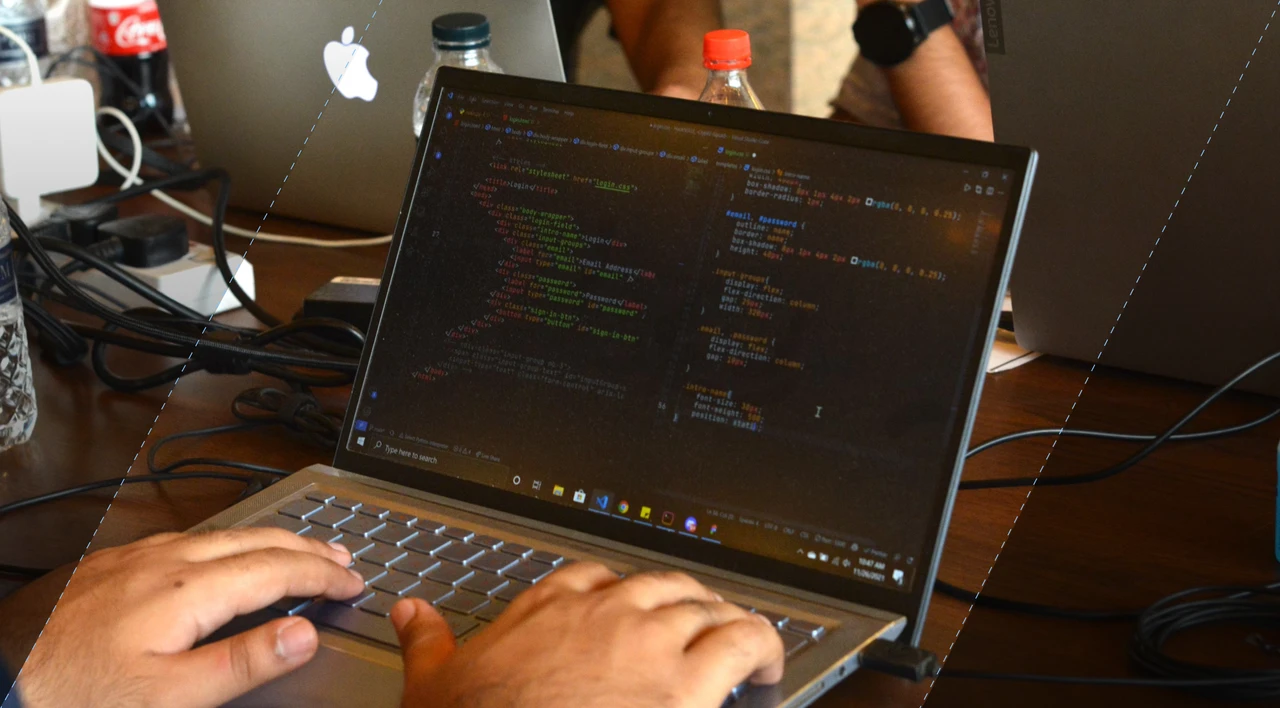SHARE
What is Haptic Feedback in Headphones?

Contents
Contents
Haptic feedback in headphones refers to the technology that adds a tactile element to the audio experience. It allows you to physically feel vibrations or sensations in response to certain sounds or frequencies. This technology enhances immersion and provides a more realistic audio experience.
Haptic feedback headphones use vibrations to simulate low-frequency sounds, such as bass, by creating a tactile sensation that can be felt by the user. This feature can be found in gaming headphones, where it adds another layer of immersion to the gameplay experience.
The benefits of haptic feedback in headphones include heightened sensory awareness, improved audio immersion, and a more immersive gaming experience.
Key Takeaways:
- Haptic feedback in headphones adds a tactile element to the audio experience.
- It uses vibrations to simulate low-frequency sounds, enhancing immersion.
- Haptic feedback benefits include heightened sensory awareness and improved audio immersion.
- Gaming headphones often feature haptic feedback for a more immersive gameplay experience.
- Haptic feedback technology enhances the overall audio experience by adding a physical element to the sound.
How Does Haptic Feedback Work in Headphones?
Haptic feedback in headphones utilizes vibrations to replicate low-frequency sounds, providing a more immersive audio experience. When audio signals are received, specialized haptic drivers or actuators in the headphones convert these signals into vibrations that can be felt by the user. These drivers or actuators are designed to create vibrations that correspond to specific frequencies or audio cues.
When the headphones receive signals within certain frequency ranges, the haptic drivers or actuators generate vibrations that the user can feel. This physical element adds a new dimension to the sound, enhancing the overall audio immersion. Haptic feedback technology in headphones allows users to not only hear the sound but also experience it through vibrations.
Haptic feedback in headphones is achieved through advanced haptic technology, ensuring that the vibrations accurately mimic the audio cues in real-time. This technology enhances the audio experience by providing a tactile sensation that complements the auditory stimulation. Whether it’s feeling the rumble of explosions in an action-packed game or experiencing the deep bass notes in a music track, haptic feedback headphones offer a more engaging and realistic sound experience.
Example Table:
|
Haptic Feedback |
Vibration |
|
Utilizes specialized haptic drivers or actuators |
Generalized vibration feature |
|
Replicates low-frequency sounds |
May not be specifically tailored for audio |
|
Enhances audio immersion |
Not primarily focused on audio enhancement |
|
Offers more precise and accurate vibrations |
May provide less precise vibrations |
Haptic Feedback vs Vibration in Headphones
Haptic feedback and vibration in headphones are often used interchangeably, but they are not the same thing. While both involve the use of vibrations, haptic feedback is more advanced and precise.
Haptic feedback in headphones is specifically designed to replicate low-frequency sounds and enhance the audio experience, whereas regular vibration in headphones may be a more general feature that is not specifically tailored for audio immersion.
Haptic feedback technology utilizes advanced signal processing and specialized drivers to create vibrations that accurately mimic the audio cues in real-time. This allows for a more immersive and realistic audio experience compared to standard headphone vibrations.
The Future of Haptic Feedback Headphones
While haptic feedback technology in headphones is still in its early stages, it shows promise for the future. Companies like Razer have already released headphones with haptic feedback features, but there is still room for improvement. One area that needs attention is the refinement of haptic intensity controls and independent sound and vibration adjustments. This would allow users to customize their experience and avoid discomfort or headaches. Additionally, further integration into games and movies could enhance the overall audio immersion. As more custom mobile app development services recognize the potential of haptic feedback in headphones, it is likely that we will see advancements and improvements in this technology.
The Benefits of Haptic Feedback Headphones
Haptic feedback headphones offer several benefits to users. First and foremost, they provide an immersive audio experience by adding a physical element to the sound. This means that not only will you hear the audio, but you will also feel it. The vibrations and sensations created by haptic feedback technology enhance the overall enjoyment and engagement while listening to music, watching movies, or playing games.
One of the key benefits of haptic feedback in headphones is its ability to improve spatial awareness in games. With haptic feedback, you can accurately locate audio cues, giving you a competitive edge in multiplayer games or a more realistic experience in single-player adventures.
But it’s not just gaming where haptic feedback shines. These headphones can also create a more realistic and immersive virtual reality experience. By adding tactile sensations to the visual and auditory components, haptic feedback headphones transport you into a whole new world, making the experience truly unforgettable.
Let’s summarize the benefits of haptic feedback headphones:
- Enhanced audio immersion
- Improved spatial awareness in games
- Realistic and immersive virtual reality experience
Comparison Table: Haptic Feedback Headphones vs Regular Headphones
|
|
Haptic Feedback Headphones |
Regular Headphones |
|
Audio Immersion |
Enhanced with physical sensations |
Audio-only experience |
|
Spatial Awareness |
Improved in games and virtual reality |
Standard audio positioning |
|
Virtual Reality Experience |
Realistic and immersive |
Audio and visual only |
As you can see from the comparison table, haptic feedback headphones offer unique advantages that regular headphones simply can’t match. Whether you’re looking for a more immersive audio experience, enhanced gaming performance, or an unforgettable virtual reality adventure, haptic feedback headphones are the way to go.
Current Limitations of Haptic Feedback Headphones
Haptic feedback in headphones offers numerous benefits; however, there are certain limitations to this technology that need to be addressed. Firstly, one limitation is the lack of fine control over vibration intensity. This can result in discomfort or headaches for some users, as the vibrations may be too strong or intense. Manufacturers need to develop better controls to allow users to personalize their haptic experience and avoid any discomfort.
Secondly, the current range of frequencies that haptic feedback headphones can reproduce is limited. This limitation may lead to a disjointed or uneven experience, especially when it comes to reproducing high-frequency sounds. Improving the frequency range will ensure a more accurate representation of all audio cues, enhancing the overall audio immersion and realism.
Another limitation is the lack of widespread integration and support of haptic feedback in games and movies. While some companies have started incorporating haptic feedback features in their products, it is not yet a widely adopted standard. This limits the availability of content that fully utilizes the potential of haptic feedback technology. More collaboration between headphone manufacturers and game developers, as well as content creators in the film industry, can help overcome this limitation and expand the possibilities for haptic feedback integration.
As technology continues to advance and more companies invest in haptic feedback technology, these limitations are likely to be addressed and improved upon. The future of haptic feedback headphones holds the promise of a more immersive audio experience with refined controls, expanded frequency ranges, and wider support across various entertainment mediums.
Flatirons’ Innovative Use of Haptic Feedback in App Development
We have discussed haptic feedback in headphones and its potential to revolutionize the audio experience; however, it’s also exciting to consider how this technology can be applied beyond just personal audio devices. At Flatirons, we’re at the forefront of integrating cutting-edge technologies into our software and app development projects.
- Incorporating Haptics in Apps: Recognizing the immersive power of haptic feedback, our team at Flatirons is exploring ways to integrate this technology into mobile and desktop applications. Whether it’s enhancing user interaction in gaming apps or providing tactile feedback in educational tools, we believe haptic technology can significantly enrich the user experience.
- Enhanced Sensory Experiences: By integrating haptic feedback similar to that used in headphones, we aim to create apps that offer users a more tactile and engaging experience. This could mean simulating textures or vibrations in educational apps or providing immersive feedback in virtual reality experiences.
As the technology behind haptic feedback in headphones continues to evolve, so too does the potential for its application in software and app development. At Flatirons, we’re excited about the possibilities that this haptic technology holds and are committed to harnessing its power to enhance our app development projects.
Conclusion
Haptic feedback headphones are an exciting technology that is revolutionizing the way we experience audio. By adding a tactile element to sound, these headphones provide a more immersive and engaging entertainment experience. Whether you’re listening to music, watching movies, or playing games, haptic feedback headphones take the audio experience to a whole new level.
The benefits of haptic feedback in headphones are numerous. The technology enhances audio immersion, allowing you to feel the thumping bass and vibrations of low-frequency sounds. This heightened sensory awareness brings a new dimension to your favorite songs, movies, and games, making you feel like you’re right in the action.
While there are currently some limitations to haptic feedback headphones, such as the lack of fine control over vibration intensity and limited frequency range, manufacturers are continuously investing in this technology to improve its capabilities. In the future, we can expect to see more advanced and refined haptic feedback headphones that address these limitations and offer an even more immersive audio experience.
So, if you’re looking to elevate your audio experience, consider trying out haptic feedback headphones. With their ability to add a tactile element to sound, these headphones will immerse you in your favorite entertainment like never before. Get ready to feel the music, movies, and games in a whole new way with haptic feedback headphones.
FAQ
What is haptic feedback in headphones?
Haptic feedback in headphones refers to the technology that adds a tactile element to the audio experience. It allows users to physically feel vibrations or sensations in response to certain sounds or frequencies. This technology enhances immersion and provides a more realistic audio experience.
How does haptic feedback work in headphones?
Haptic feedback in headphones works by using vibrations to replicate low-frequency sounds. When audio signals are received, the headphones convert these signals into vibrations that can be felt by the user. This is achieved through the use of specialized haptic drivers or actuators in the headphones. These drivers or actuators are designed to create vibrations that correspond to specific frequencies or audio cues.
What is the difference between haptic feedback and vibration in headphones?
Haptic feedback and vibration in headphones are often used interchangeably, but they are not the same thing. While both involve the use of vibrations, haptic feedback is more advanced and precise. Haptic feedback in headphones is specifically designed to replicate low-frequency sounds and enhance the audio experience, whereas regular vibration in headphones may be a more general feature that is not specifically tailored for audio immersion.
What is the future of haptic feedback headphones?
While haptic feedback technology in headphones is still in its early stages, it shows promise for the future. As more companies recognize the potential of haptic feedback in headphones, it is likely that we will see advancements and improvements in this technology, such as the refinement of haptic intensity controls and further integration into games and movies.
What are the benefits of haptic feedback headphones?
Haptic feedback headphones offer several benefits to users. Firstly, they provide an immersive audio experience by adding a physical element to the sound. Secondly, haptic feedback can improve spatial awareness in games, allowing users to accurately locate audio cues and have a more competitive edge. Lastly, haptic feedback headphones can create a more realistic and immersive virtual reality experience by adding tactile sensations to the visual and auditory components.
What are the current limitations of haptic feedback headphones?
While haptic feedback in headphones offers many benefits, there are some limitations to this technology. One limitation is the lack of fine control over vibration intensity, which can result in discomfort or headaches for some users. Additionally, the current range of frequencies that haptic feedback can reproduce is limited, which can lead to a disjointed or uneven experience. Another limitation is the lack of widespread integration and support in games and movies.
IoT Development Services
Harness the power of IoT with Flatirons Development1 innovative IoT development services.
Get the CEO's Take
Handpicked tech insights and trends from our CEO.
IoT Development Services
Harness the power of IoT with Flatirons Development1 innovative IoT development services.
Get the CEO's Take
Handpicked tech insights and trends from our CEO.

Digital Product Development: Enhance Your Business Offerings
Flatirons
Sep 12, 2025
React SEO: Optimize Your React Apps for Search Engines
Flatirons
Sep 07, 2025
Will Software Engineers Be Replaced by AI?
Flatirons
Aug 31, 2025
Best Data Analytics Strategy for Business Growth
Flatirons
Aug 25, 2025
Ruby Case Statement: A Simplified Approach to Conditional Logic
Flatirons
Aug 19, 2025
Team Augmentation: Enhance Your Workforce Capabilities
Flatirons
Aug 13, 2025